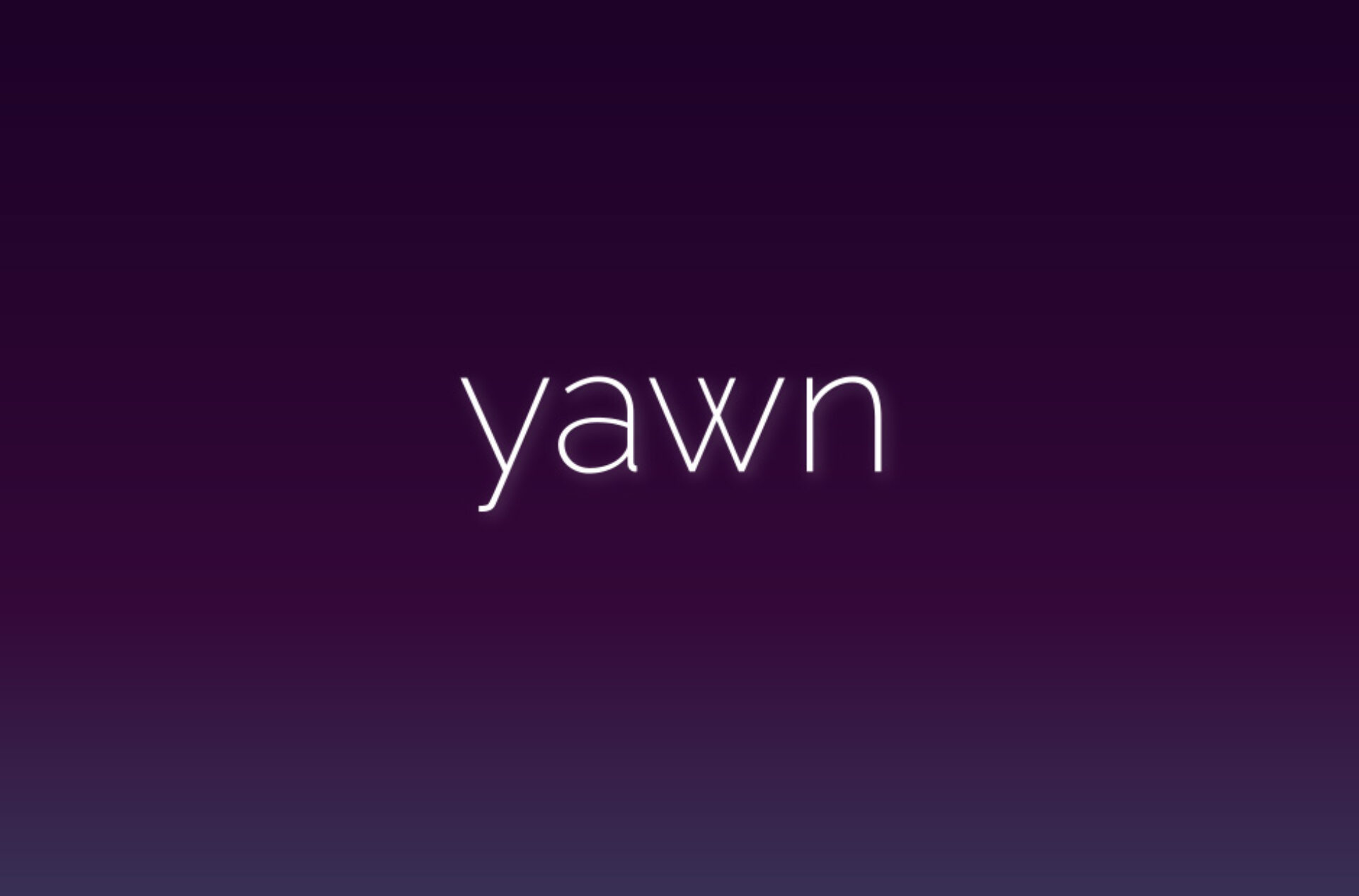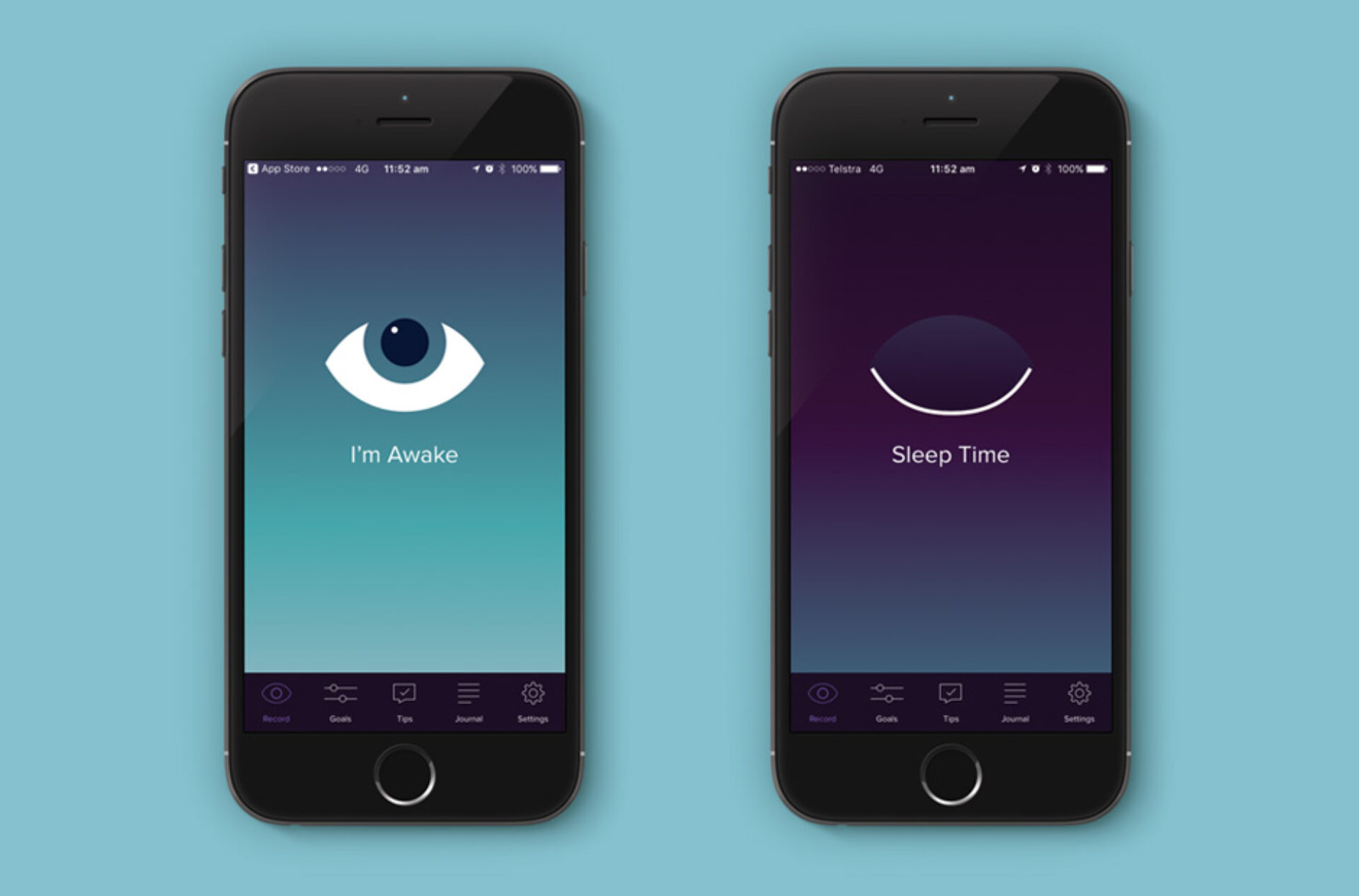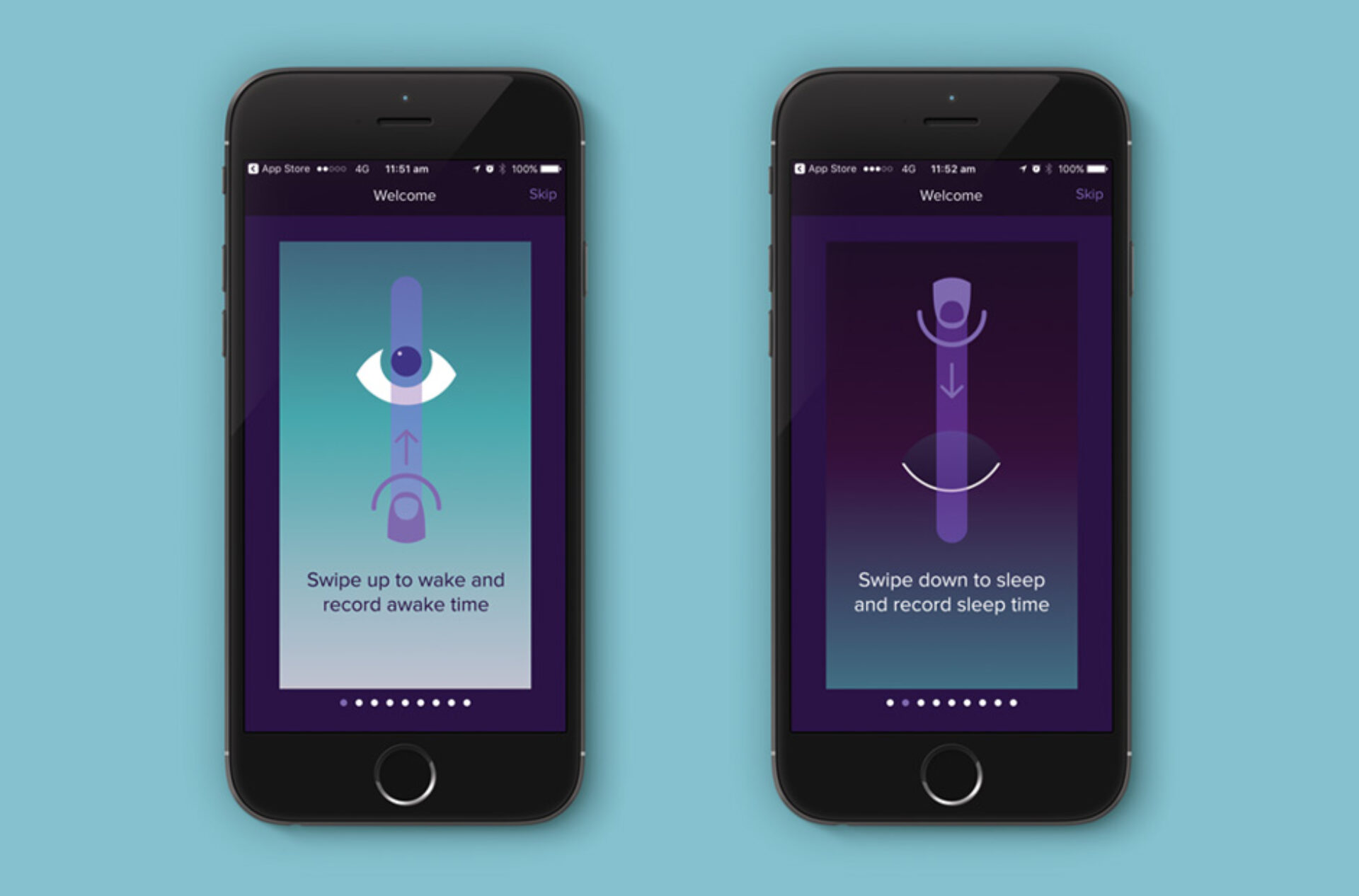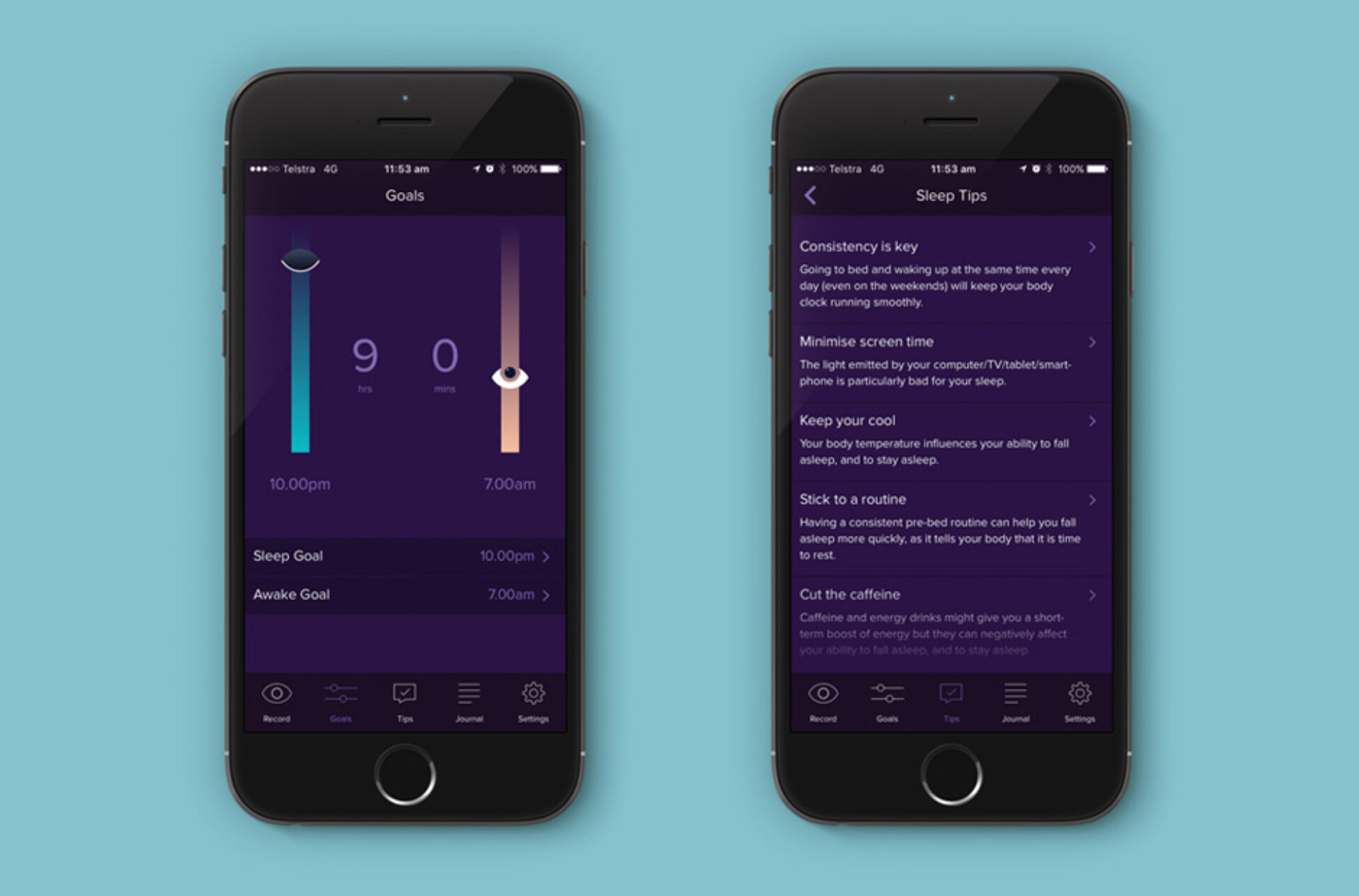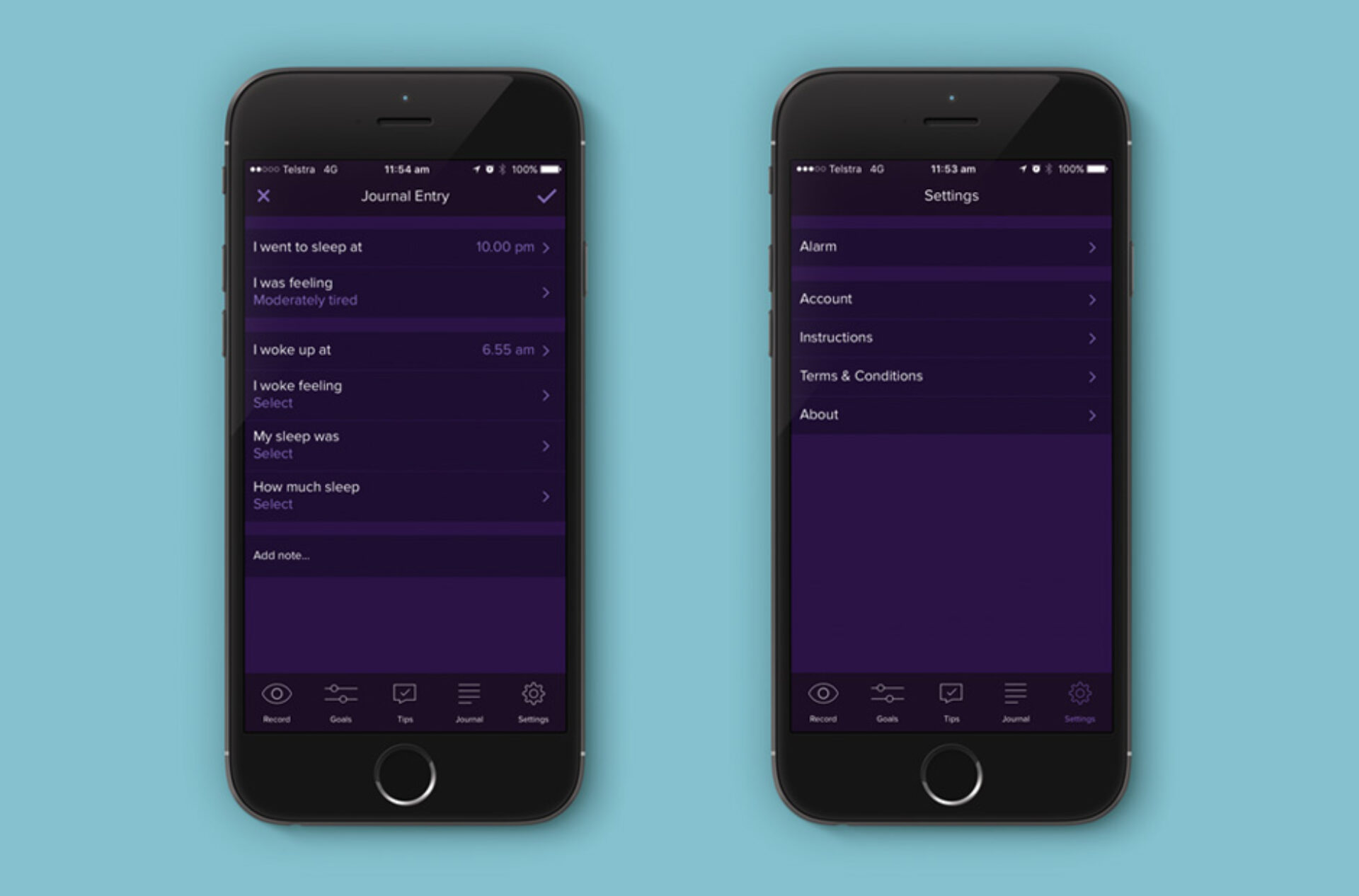YAWN
An app helping young Australians with their sleep
Case study
Researcher Jessica Paterson at Central Queensland University is conducting a research project to study the effects that shift work has on the youth of Australia. Headjam designed and developed an app to facilitate the research.
Read Hide the full case studyBackground
Jessica Paterson is an early career researcher working at Central Queensland University’s (CQU) Appleton Institute in South Australia. She has a background in psychology and specialises in the relationship between sleep, fatigue and wellbeing.
She excitingly engaged Headjam in 2016 to collaborate on her research project, aimed at more accurate understanding the type of effects that shift work has on the youth of Australia. The results of which, Jessica would use to make recommendations to the South Australian Work Health and Safety Youth Strategy.
Jessica wanted to engage with youth in an innovative way that would resonate with them more effectively than traditional classroom methods. That’s where Headjam came in. We were brought on board to develop an engaging and innovative app called YAWN (Young Adults Working Nights). The purpose of the app was to:
+ track sleep behaviour;
+ allow users to self-monitor and set goals; and
+ provide personal advice regarding fatigue levels, how it affects them and what to do about it.
The study required users to enter their sleep data manually each day for a period of four weeks, which was then analysed by Jessica and her team.
Objective
To track, monitor and encourage improved sleep behaviour of young workers.
Target Audience
Young workers aged between 16-24 years old.
Consumer Proposition
Improving sleep outcomes for young workers.
Desired Consumer Response
‘I understand that my sleep behaviour directly impacts my health and wellbeing’.
We wanted to make this app as attractive to the youth market as possible, so aesthetics were a high priority within the app itself.
Creative Solution
Visually the goal was to create a calm, dream-like experience for the user; one that was unisex in its appeal and didn’t jar with the solutions offered up for better sleep habits. Soothing hues of blue, purple and orange were colours that were discussed heavily in the early stage of design development, and eventually became part of the overarching colour palette.
We designed a bespoke illustrated ‘eye’ animation to demonstrate the different states, awake and asleep. A subtle gradient shift within the colour palette occurred when the user changed from an awake state to an asleep state. This subtlety contributed to the overall experience of using the app, and these types of moments of interaction were developed to assist and encourage user engagement.
We branded the YAWN app with a modern and friendly logotype, which was the hero on both the app icon, the opening screen of the app and the home page of the microsite.
We designed the app with the user in mind – data entry was simple, navigation was easy and the app as a whole, intuitive. The App stored and measured each of the users’ data that they populated on a daily basis, which Jess and her team could access through a custom Application Management System (AMS).
The AMS allowed Jessica and her team of researchers to download the data on a daily, weekly or monthly basis, to measure how the youth of Australia were affected (both positively and negatively) by their sleep patterns during shift work, and to populate the app in real-time without the need for costly and time consuming version updates.
The outcome of this research project was to inform the government and private sectors of the outcomes of the project, to better inform and support young workers.
Evaluation
The app has currently* been downloaded by 181 young workers identified as suitable for the study.
Apple Store: 138 Downloads
Google Play Store: 43 Downloads
* At the time of publication
Client
CQ University
Project
YAWN app and website
Processes used in this project
Advertising campaigns, Branding, Brand identity, Brand management, Brand positioning, Brand strategy, Logo design, Graphic design, Illustrations, Typography design, Marketing, Project management, Creative thinking, Android app designers, Android app development, iPhone app designers, iPhone app development, User experience design, User interface design, Website design, Website development
